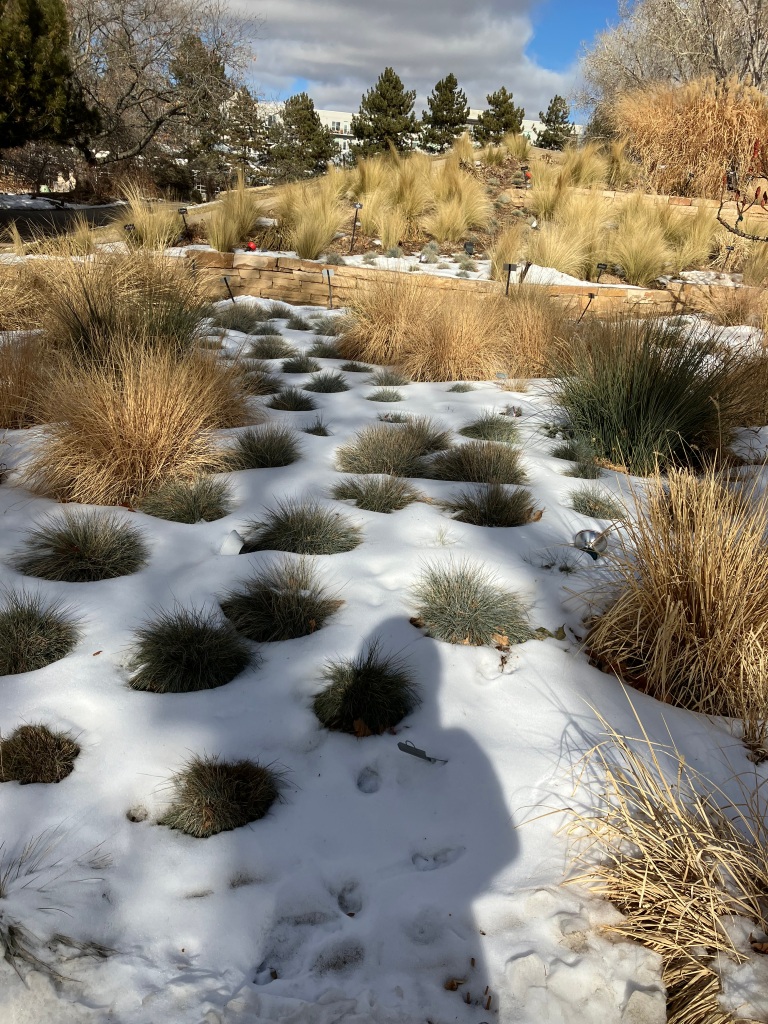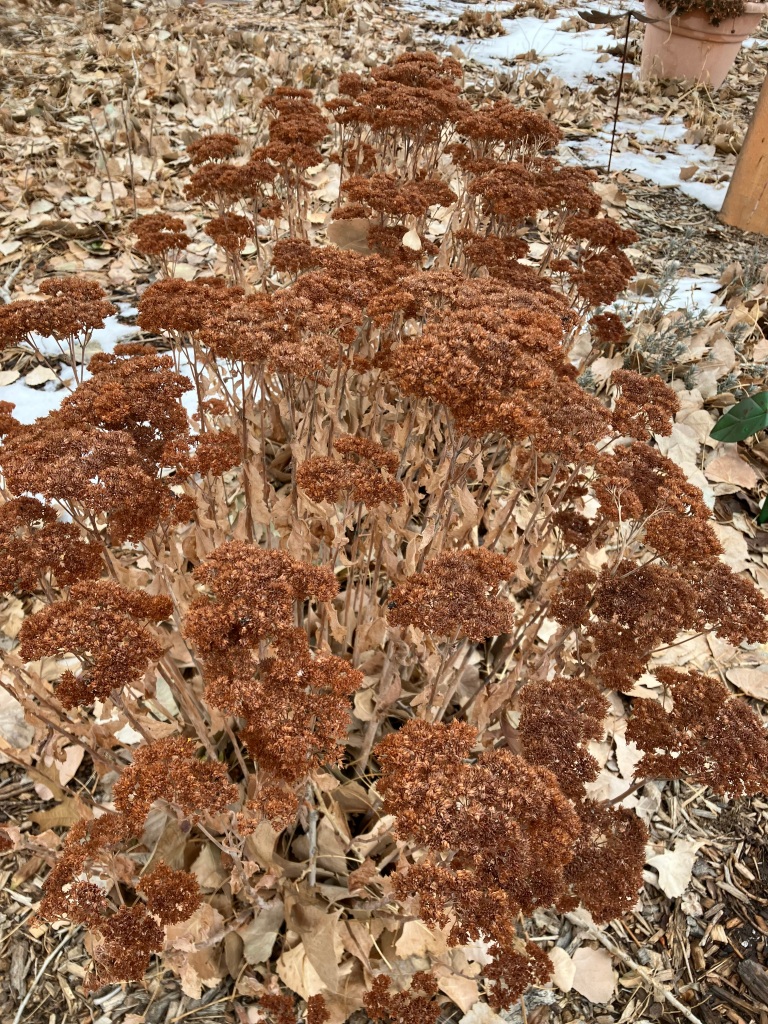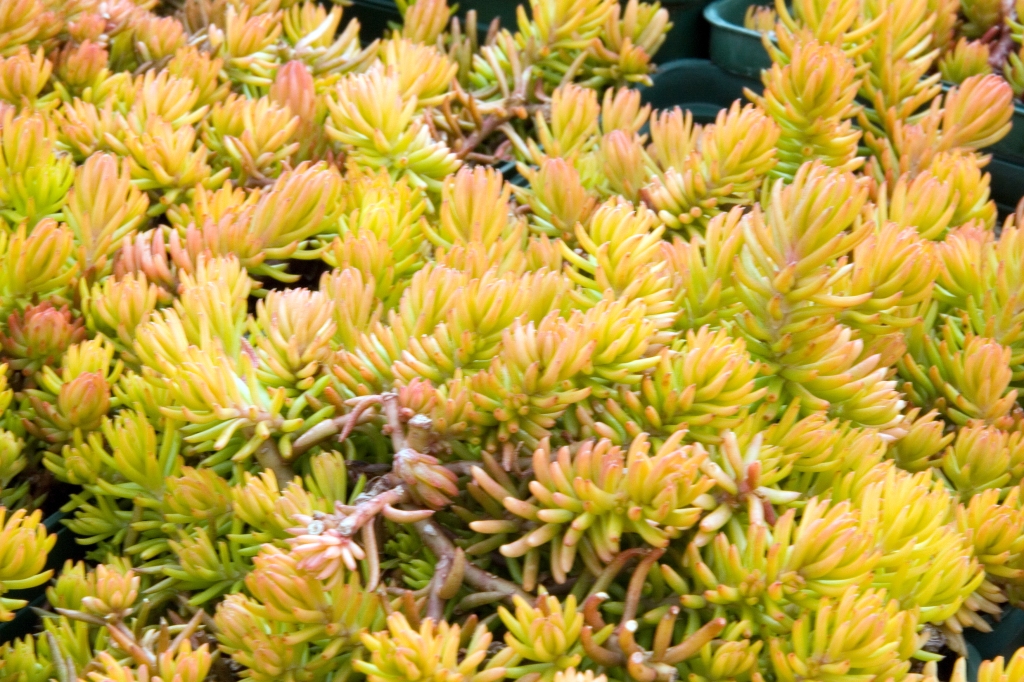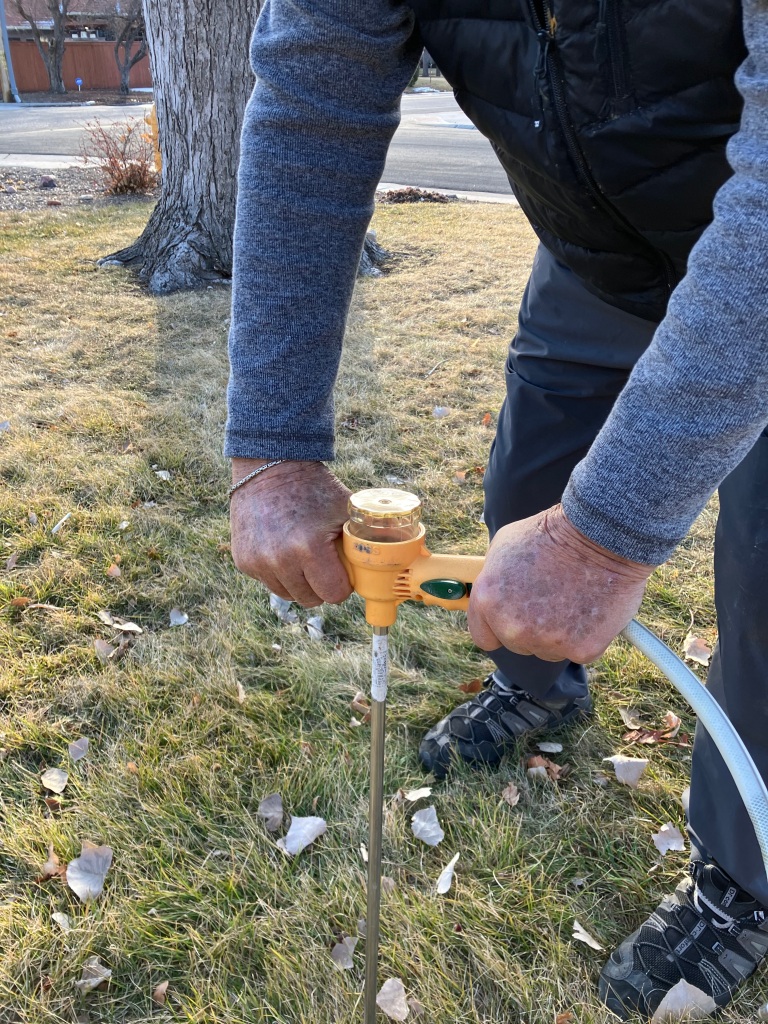By Margerie Hicks, CSU Extension – Denver Master Gardener since 2010

February is one of the best months to enjoy the interesting patterns, textures, and shapes that dried grasses and perennials form in contrast to the snow. It is also a time to read or otherwise educate yourself about gardening trends and ideas. And finally, it is a time to complete the few but important tasks needed in February to prepare for the coming growing season.
Winter Interest

If you refrained in the fall from cutting down ornamental grasses, perennials with balls of seeds like echinacea, or plants that keep their color and form, you now have interesting winter patterns and shapes to enjoy. You have also helped provide shelter and food for wildlife, such as birds and insects.
If you don’t already have any sedum Angelina, make a note to plant some in the spring to enjoy next winter. It is a ground cover that is light green in the spring, yellow in the summer, and orange with green accents in the winter. It provides a wonderful splash of color in the winterscape.


Sedum Angelina adds multi-season beauty. Photos: David J. Stang, CC BY-SA 4.0 via Wikimedia Commons
Gardening Edification
- Expo: The annual Colorado Home and Garden Show runs from February 24thto March 3rd. Master Gardeners will be on hand to answer gardening questions at the large CSU Extension display. Be sure to stop by and say hi.
- Books: You may have some gardening-related books waiting to read on a cold winter night, but in case you want suggestions check out our earlier post, Winter Reading for Gardeners.
- Websites: CSU Extension’s website offers research-based fact sheets and videos on a wide range of gardening topics. Additionally, the internet is filled with gardening information and pictures. The most reliable sources have an “.edu” extension on the address, indicating an affiliation with university horticulture/agriculture research.
- Gardening classes: Local garden shops and the Denver Botanic Gardens offer classes on many topics that may pique your interest. You can also find a wide array of webinars offered by CSU Extension here.
- Take our reader survey: We’d love your feedback and ideas for future posts. Find the survey here. Survey closes February 18th.
February Tasks

There are a few tasks that should be done and many that could be done this month. A good overview can be found in this Late Winter Garden and Lawn Care fact sheet. Key tips include:
- Water: All trees, shrubs, and perennials will benefit from regular winter watering, especially those that are less than two years old. Water once a month on days when the temperature is 40 degrees or warmer with no snow cover. Click here for a fall and winter watering fact sheet that will make your efforts most effective.
- Mulch: Woody plants benefit from mulch to preserve soil moisture. Rock or gravel mulch is useful in retaining heat. Apply as needed.
- Prune: This is a good time to prune broken and unwanted branches from trees and shrubs, especially fruit trees.
Enjoy your gardening leisure in February. May will be here soon enough.
Speaking of May don’t forget to mark your calendars for our amazing plant sale!




























